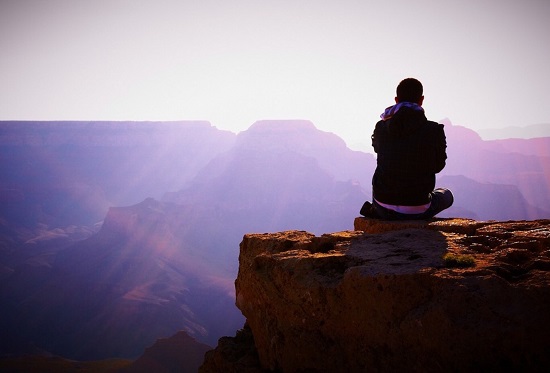I never thought I had the patience for meditation.
I certainly didn’t think I had the time. Whenever the subject of meditation came up, I would wave it off because I knew that would never be something I could do.
The images in my mind of someone sitting with their legs impossibly entwined across their lap, posture perfect, in a glorious state of Zen was intimidating. There was no way I could manipulate my legs like that and I couldn’t possibly sit there for that long while my mind thought of nothing.
I had considered the idea of meditation for many years. I was cynical of the outcomes of meditation and quite frankly, I didn’t think I could focus long enough to actually meditate.
I was wrong. Everyone can meditate. If a person like me, whose mind is constantly running full-speed ahead can do it, you can too.
Don’t be dismayed if you’ve tried meditation and didn’t like it the first time. Meditation is a discipline that has to be practiced.
Much like going to the gym and working on your biceps, you can’t meditate once and suddenly become a master. It is a life-long practice that should be something you are dedicated to but also enjoy.
Vietnamese monk Thich Nhat Hanh says, “Meditation is to be aware of what’s going on—in our bodies, in our feelings, in our minds, and in the world.”
I thought meditation meant zoning out of and abandoning what was going on with my life and the world. A place for me to hide. It’s the opposite. Through meditation, we learn to take both extremes of life—the happy and the sad—and learn to experience both of them in a healthy way.
There doesn’t have to be a perfect place, a perfect saying or a perfect moment in time to meditate. We all begin somewhere.
I like to meditate with my dog. We sit on the porch together and soak up the first rays of the sun.
His eyes close and the look on his face as he takes in the sun is gratitude. He willingly accepts this new morning as the Here and Now. He doesn’t reflect on the worries of yesterday, nor does he focus on the future. He is blissfully aware of the present moment.
I have begun to allow my mind to do the same. During those few moments I’m sitting there, feeling the sun’s rays on my face, I do not dwell in the past, nor do I worry about the future. I breathe deeply and slowly.
One of Thich Nhat Hanh’s easiest poems to help you get going with meditation is this:
Breathing in, I calm my body.
Breathing out, I smile.
Dwelling in the present moment
I know this is a wonderful moment.
Once you’re comfortable with including this short poem into your daily routine, try something that is a bit more challenging. The important part is to never stop being a student. Meditation is about exploring who you are and finding new ways to be of better service to the world.
Pema Chodron is one of my favorite teachers. She explains meditation in a very simple, non-judgmental format that allows everyone the opportunity to take part. This is what she says about meditation:
“Meditation takes us just as we are with our confusion and our sanity.”
Allow that phrase to resonate with you. There’s no need to be pompous or fancy or intimidated.
If I haven’t enticed you into giving it a try yet, consider the science aspect of mediation.
The University of Wisconsin-Madison has been undergoing a research study using 8 Buddhist monks in a functional magnetic resonance imaging (fMRI) test to monitor brain activity during various forms of meditation. 10 students of the university with no previous meditation experience were used as control participants.
The results showed that meditation activated the trained minds of the monks in significantly different ways from those of the volunteers.
“What we found is that the trained mind or brain is physically different from the untrained one,” said Richard Davidson, a neuroscientist at the university.
Take it slow. Don’t feel like you have to be perfect while meditating. Make it a part of your life, just as you would brushing your teeth.
If, like me, you need some starting points, here are three:
1. Start small. Don’t overwhelm yourself with trying to be perfect. Remember that meditation accepts us for who we are in this present moment.
2. Stay comfortable. If you practice enough, you may eventually sit in the Lotus position and be the poster child for meditation. Until then, don’t sacrifice the benefits of meditation for how you think you should look.
3. Just breathe. It seems like such a simple thing, but when you really focus on your breath, that is when things will start to move along for you.
Meditate to be of benefit to others. Once you are comfortable in your practice, reach out to others who are nervous or skeptical and gently help them along the way. Don’t be afraid to ask a more experienced person for help either.
Give meditation a chance. You won’t be sorry.
~
References:
http://www.news.wisc.edu/
http://www.washingtonpost.com/
The Pocket Pema Chodron
Being Peace by Thich Nhat Hanh
~
Relephant:
Mindfulness for Beginners: Dispelling 7 Myths of Meditation.
~
Author: Jennifer Cullum
Editor: Caroline Beaton
Photo: Christina Ramey/Flickr.com













Read 0 comments and reply